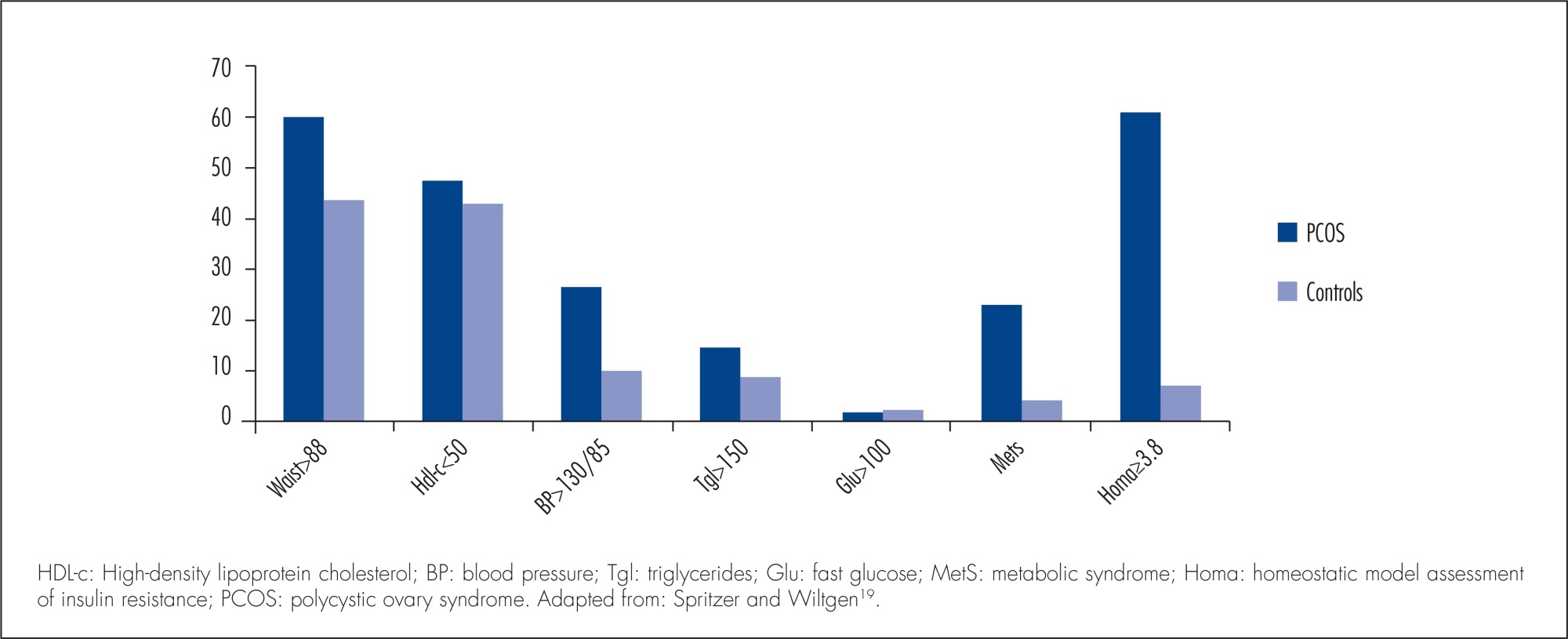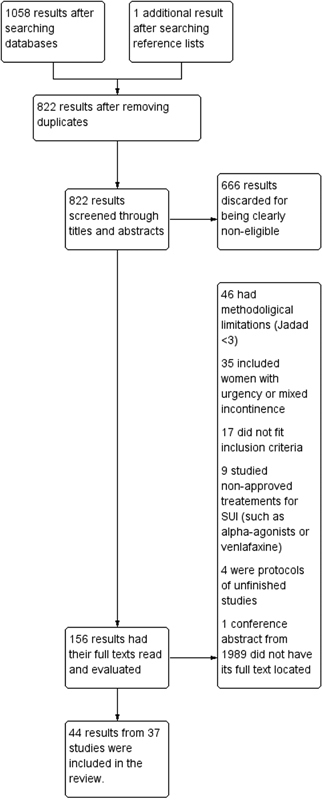-
Original Article10-14-2004
Prevalence of koilocytosis in penile biopsies of partners of women with HPV-induced genital lesions
Revista Brasileira de Ginecologia e Obstetrícia. 2004;26(7):557-562
Abstract
Original ArticlePrevalence of koilocytosis in penile biopsies of partners of women with HPV-induced genital lesions
Revista Brasileira de Ginecologia e Obstetrícia. 2004;26(7):557-562
DOI 10.1590/S0100-72032004000700008
Views149See morePURPOSE: to determine the prevalence of koilocytosis in penile biopsies of partners of women with HPV-induced genital lesions, and to analyze the risk factors associated with the penile viral infection. METHODS: a total of 80 partners of HPV-infected women with genital lesions were included in this transversal cohort study. The study was carried out between May 2002 and June 2003. The mean age was 34.1 years (16 to 63). No patient reported any kind of genital lesion. They answered questions regarding the presence of urethral symptoms, history of sexually transmitted diseases, number of sexual partners, use of condoms, and circumcision. The patients were submitted to peniscopy with acetic acid and toluidine blue solutions and finally to biopsy of the suspected lesions. Data were analyzed statistically by the chi2 test. RESULTS: the examination was considered negative in 24 patients (30%). All remaining 56 patients (70%) showed white lesions and toluidine blue-positive lesions. Of these, 53 were submitted to biopsy and 41 (77.3%) presented histological changes suggestive of HPV infection. CONCLUSIONS: the prevalence of the male genital infection was 51.2% and no risk factor analyzed was associated with an increased prevalence of HPV genital infection.
-
Original Article10-14-2004
Hemorrhagic complications of gestational trophoblastic disease
Revista Brasileira de Ginecologia e Obstetrícia. 2004;26(7):551-556
Abstract
Original ArticleHemorrhagic complications of gestational trophoblastic disease
Revista Brasileira de Ginecologia e Obstetrícia. 2004;26(7):551-556
DOI 10.1590/S0100-72032004000700007
Views89See morePURPOSE: to report three cases of gestational trophoblastic disease with intense hemorrhagic complications, in which exceptional surgical procedures were used to obtain hemostasis. METHODS: the study comprised three patients: the first, a young woman, 27 years old, nullipara, was submitted to total abdominal hysterectomy and, thereafter, to chemotherapy until remission was achieved. Another patient bled from an extensive vaginal metastasis that could only be treated with hypogastric arterial ligation. Definitive sustained remission was obtained after chemotherapy. Two years after the episode, the patient achieved a new, normal pregnancy. The third patient, with persistent trophoblastic disease, presented a mass of molar tissue within the uterine inferior segment and cervix, extending to the right vaginal cul-de-sac, heavily bleeding at each attempt of surgical removal, whether by sharp or suction curettage. As a consequence of the invasive maneuvers she became seriously infected with sepsis; although being submitted to intensive antibiotic therapy and total abdominal hysterectomy she died a few days later. RESULTS: of the two patients who were submitted to total abdominal hysterectomy, one survived and the other died of septicemia. The third patient, who was submited to hypogastric arterial ligation, had a favorable outcome and achieved a new and normal pregnancy. CONCLUSION: albeit gestational trophoblastic disease usually has an undisturbed course and spontaneous remission, unexpected complications may demand radical approaches leading sometimes to unfavorable results.
-
Original Article10-14-2004
Diagnosis of fetal growth restriction by transverse cerebellar diameter/abdominal circumference ratio
Revista Brasileira de Ginecologia e Obstetrícia. 2004;26(7):535-541
Abstract
Original ArticleDiagnosis of fetal growth restriction by transverse cerebellar diameter/abdominal circumference ratio
Revista Brasileira de Ginecologia e Obstetrícia. 2004;26(7):535-541
DOI 10.1590/S0100-72032004000700005
Views116PURPOSE: to evaluate the validity of transverse cerebellar diameter (TCD)/abdominal circumference (AC) ratio in the diagnosis of fetal growth restriction (FGR), determining its best cutoff value and accuracy in symmetric and asymmetric FGR. METHOD: a prospective cross-sectional study, carried out in 250 pregnant women with singleton pregnancies, gestational age between 20 and 42 weeks, with ultrasound confirmation. The TCD measurement was obtained by placing the calipers at the outer margins of the cerebellum, after its localization in the posterior fossa, and slightly rotating the transducer below the plane of the thalami. The abdominal circumference was measured at the on junction of the left portal and umbilical veins. The best TCD/AC cutoff ratio was established by the receiver operator characteristic (ROC) curve. Neonates with TCD/AC ratio greater than the cutoff value were diagnosed as having FGR. We classified as gold standard for FGR the newborn infants who presented birth weight below the 10th percentile. Neonates showing FGR and Rohrer ponderal index between 2.2 and 3 were labeled as symmetric and below 2.2, asymmetric. RESULTS: the cutoff value calculated by the ROC curve for TCD/AC ratio was 16.15. The sensitivity, specificity, accuracy, positive and negative predictive values, and likelihood ratio for positive and negative tests were 77.4, 82.6, 38.7, 96.3, 82, 4.5 and 3.7%, respectively. In the symmetric FGR, sensitivity and specificity were 80.8 and 81.7%, respectively. In the asymmetric FGR, sensitivity and specificity were 60 and 75%, respectively. CONCLUSION: TCD/AC ratio is an effective method in symmetric and asymmetric FGR diagnosis.
Key-words Abdominal circumferenceFetal growth restrictionFetal ultrasonographyTransverse cerebellar diameterSee more -
Original Article10-14-2004
Diagnostic accuracy of hysterosalpingography and transvaginal sonography to evaluate uterine cavity diseases in patients with recurrent miscarriage
Revista Brasileira de Ginecologia e Obstetrícia. 2004;26(7):527-533
Abstract
Original ArticleDiagnostic accuracy of hysterosalpingography and transvaginal sonography to evaluate uterine cavity diseases in patients with recurrent miscarriage
Revista Brasileira de Ginecologia e Obstetrícia. 2004;26(7):527-533
DOI 10.1590/S0100-72032004000700004
Views158See morePURPOSE: to evaluate the diagnostic accuracy of hysterosalpingography (HSG) and transvaginal sonography (TVS) in terms of detecting uterovaginal anomalies in women with a history of recurrent miscarriage. METHODS: eighty patients who presented two or more consecutive miscarriages were submitted to HSG, TVS and hysteroscopy (HSC). The following diagnoses were considered separately: uterine malformations, intrauterine adhesions and polypoid lesions. Hysteroscopy was the gold standard. The matching among the different methods was evaluated by the kappa coefficient and its significance was tested. The significance level was 0.05 (alpha=5%). Sensitivity, specificity, positive and negative predictive values, with 95% of statistical confidence interval, were calculated. RESULTS: uterovaginal anomalies were detected in 29 (36.3%) patients: 11 (13.7%) were uterine malformations, 17 (21.3%) intrauterine adhesions and one (1.3%) a polypoid lesion. The global matching between HSG and HSC was 85.5%, while between TVS and HSC it was only 78.7%. The best accuracy of HSG appeared to be for the diagnosis of uterine malformations and intrauterine adhesions (diagnostic accuracy of 97.5 and 95%, respectively). For the diagnosis of polypoid lesions, HSG had a diagnostic accuracy of only 92.5%, due to the low rate of positive predictive value (14.3%). TVS had a worse accuracy for all diagnoses, 93.7% for the diagnosis of uterine malformations and 85% for intrauterine adhesions, due to low sensitivity. CONCLUSIONS: histerosalpingography showed a good diagnostic accuracy for the diagnosis of uterine cavity diseases. TVS had good specificity, but with low sensitivity.
-
Original Article10-14-2004
Preliminary evaluation of the prenatal and birth humanization program in Brazil
Revista Brasileira de Ginecologia e Obstetrícia. 2004;26(7):517-525
Abstract
Original ArticlePreliminary evaluation of the prenatal and birth humanization program in Brazil
Revista Brasileira de Ginecologia e Obstetrícia. 2004;26(7):517-525
DOI 10.1590/S0100-72032004000700003
Views120See morePURPOSE: to evaluate the experience of implementation of the Brazilian Prenatal and Birth Humanization Program (PHPN) in 2001 and 2002, through a population descriptive study. METHODS: the study was performed through documental analysis and using data generated by SISPRENATAL, comparatively evaluating the indicators concerning criteria for prenatal follow-up in different states, regions and period. RESULTS: until the end of 2002, 3983 municipalities joined the Program (72% adhesion) and, among them, 71% reported results, constituting a data base of 720,871 women. In 2002 only 28% of the pregnant women were already registered, 25% before 120 days of pregnancy. Nearly 22% of the women had six prenatal visits, 6% had the post-partum visit and the compulsory tests performed, only 4% had also the HIV test and were vaccinated against tetanus, and 12% had two examinations performed for syphilis. There were important regional variations, generally showing better indicators for the Southeast and South regions. CONCLUSIONS: although the indicators of quality of care showed an improvement from 2001 to 2002, the recorded low percentages attest the need for permanent evaluations and new interventions with the aim of improving the quality of this care, especially in the North and Northeast regions.
-
Original Article10-14-2004
Fresh wet mount in pregnancy: correlation with Pap smears
Revista Brasileira de Ginecologia e Obstetrícia. 2004;26(7):509-515
Abstract
Original ArticleFresh wet mount in pregnancy: correlation with Pap smears
Revista Brasileira de Ginecologia e Obstetrícia. 2004;26(7):509-515
DOI 10.1590/S0100-72032004000700002
Views78See morePURPOSE: to analyze vaginal contents using the fresh wet mount of a cytological exam in the first prenatal visit of women with or without genital complaints and correlate the conclusion with the results from the Pap smears. Microscopy during pregnancy should be valued and recognized as a method capable of providing immediate diagnosis in 90% of bacterial vaginosis, candidiasis and trichomoniasis cases. METHODS: a prospective study was performed in 216 pregnant women selected from the prenatal department of a public hospital, between October 30, 2001 and November 12, 2002. Two samples were collected from the posterior vaginal vault and deposited onto two separate microscope slides. To one slide, a droplet of 0.9% NaCl was applied and to the other, a droplet of 10% KOH. Both slides were covered with a coverslip for immediate microscopic evaluation. Tests were perfomed in one drop of the material to examine pH and whiff. The microscopic examination of the material was carried out at a 100X, 400X and exceptionally 1000X magnification. Pap smears were performed in all pregnant patients. The correlation between the results of the utilized cytological methods was perfomed by the kappa coefficient, which evaluates the concordance for quality variables. RESULTS: the findings of the normal vaginal microflora in the fresh wet mount were 7.8%, representing the most observed cytological aspect, and without correspondence with the 3.70% verified by the Pap smears. In the fresh wet mount, bacterial vaginosis was found in 30.9% and candidiasis in 7.9% of the cases. However, in the Pap smears no similar event occurred, the diagnosis being 0.7 and 24.3%, respectively. The absence of a diagnosis correlation of nonspecific bacterial vaginitis by direct microscopy (17.5%) and Pap smears (51.3%) is probably due to the undervalued diagnosis of bacterial vaginosis by the latter method. The diagnosis of trichomonas vaginalis observed in both cytological methods (3.70 and 2.78%) represents a low prevalence of these parasites in the course of pregnancy. The kappa coefficient between the two cytological procedures in the several microbiological findings showed low correlation of the diagnosis of bacterial vaginosis with nonspecific vaginitis, as well as the normal vaginal flora. CONCLUSIONS: although the Pap smear presents the best accuracy of the diagnosis of yeast without pseudomycelium, the fresh wet mount has shown to be a better appraiser of nonepithelial cells the vaginal smears. Because Pap smears allow a better evaluation of vaginal epithelial cells, they represent the most important tool to show the aggressions and reactions of the nucleus and cytoplasm.
-
Thesis Abstract09-02-2004
Study of sample adequacy for cytopathologic examination gathered from the cervix uteri by Ayre spatula plus cytobrush and Accellon Combi
Revista Brasileira de Ginecologia e Obstetrícia. 2004;26(6):497-497
Abstract
Thesis AbstractStudy of sample adequacy for cytopathologic examination gathered from the cervix uteri by Ayre spatula plus cytobrush and Accellon Combi
Revista Brasileira de Ginecologia e Obstetrícia. 2004;26(6):497-497
Search
Search in:
Tag Cloud
Pregnancy (252)Breast neoplasms (104)Pregnancy complications (104)Risk factors (103)Menopause (88)Ultrasonography (83)Cesarean section (78)Prenatal care (71)Endometriosis (70)Obesity (61)Infertility (57)Quality of life (55)prenatal diagnosis (51)Women's health (48)Maternal mortality (46)Postpartum period (46)Pregnant women (45)Breast (44)Prevalence (43)Uterine cervical neoplasms (43)






